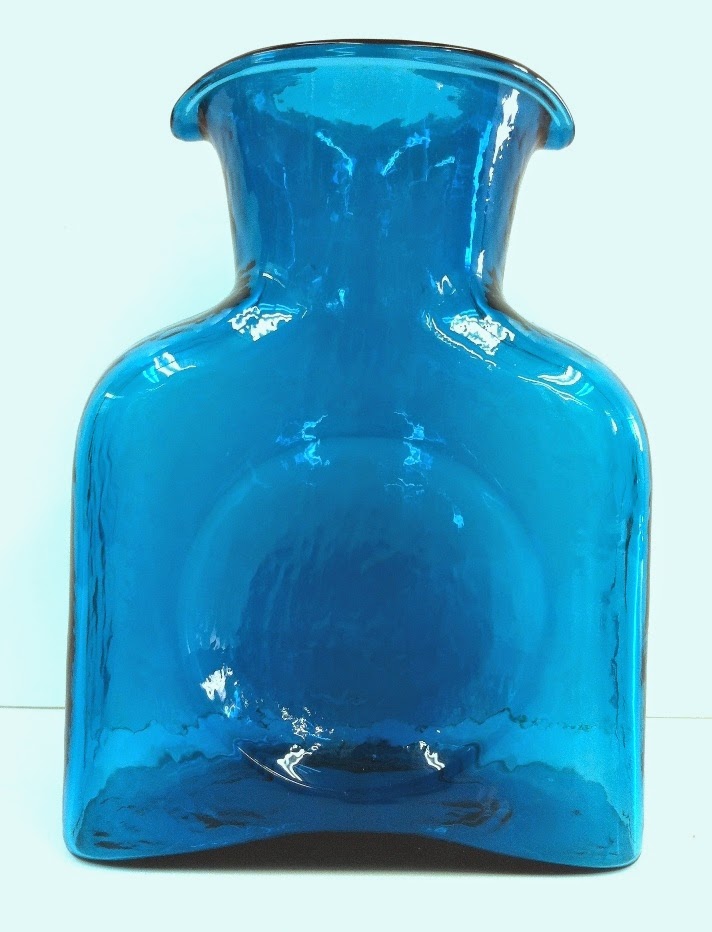I recently wrote about this set of Blendo pitcher with six
glasses that I found at GasLamp Too in Nashville. In pastels of yellow, pink, blue and green, this is the perfect set for a “Mad Men” style cocktail bar (available through www.gaslampantiques.com).
Several readers contacted GasLamp Too about the piece. They all had the same question: Wasn't this called "Blenko" glass rather than "Blendo"? No, this is indeed Blendo; Blenko is another type of glassware entirely. But you can see how this is an easy mistake to make: The spelling is only one letter apart, with a "k" or a "d" making the difference. (Photo below: a lavender Blendo martini set at www.RubyLane.com in the shop Chez Marianne.)
During
the 1950s and 1960s the West Virginia Glass Company of Weston, West Virginia produced its line of beautiful, yet inexpensive, Blendo glassware that came in
fabulous colors. Frosted up the sides until they faded to clear, in an ombré style
of graduated shading, the glasses and their pitchers were trimmed with
shiny gold rims. Blendo included a wide array of cocktail ware as well as serving ware. (Photo below: A Blendo relish set found at FreeLiving at www.Etsy.com.)
Among the brighter Blendo colors were tangerine and yellow and
among the pastel shades was a beautiful lavender. Blendo's maker, the West Virginia
Glass Company, was formed in 1928 and was shuttered in 1987.
Blenko, which still exists today, is also a West Virginia company; it is in Milton, WV. (Yet again, another confusing element of the "Blendo versus Blenko" story.) Blenko makes hand-blown artisan glass
that looks completely different from Blendo, as you can see from the photo, below. This is a Blenko water bottle.
Blenko has been in production since 1893. It was the brainchild of William John Blenko, who was born in London in 1854, apprenticed with a glass craftsman and moved to New York City at the age of 38. Interestingly, is still owned and operated by the Blenko family today.








